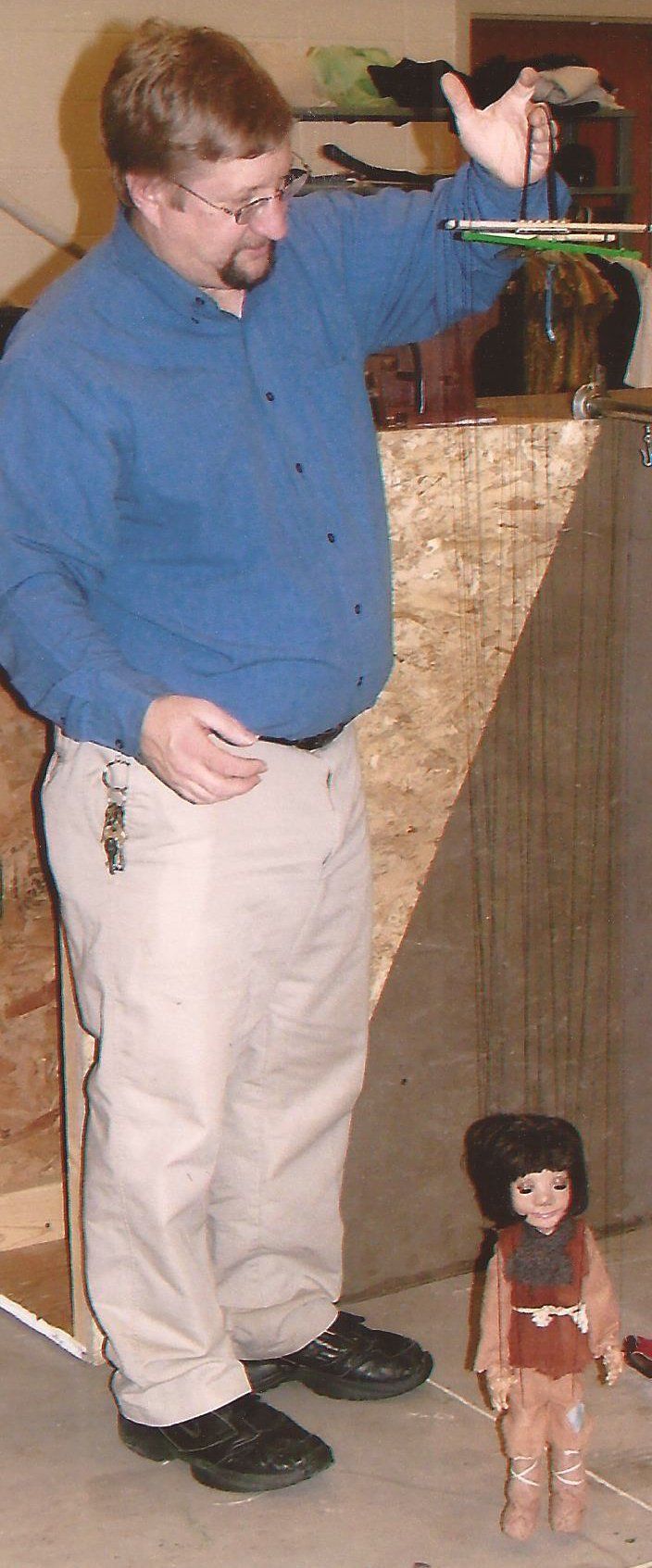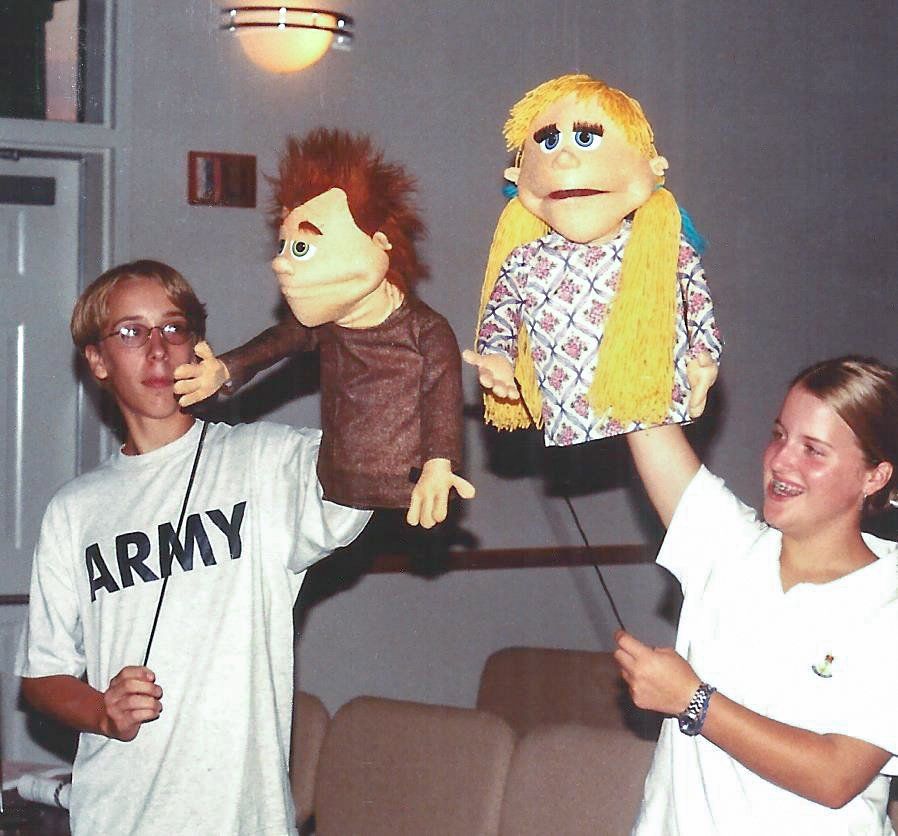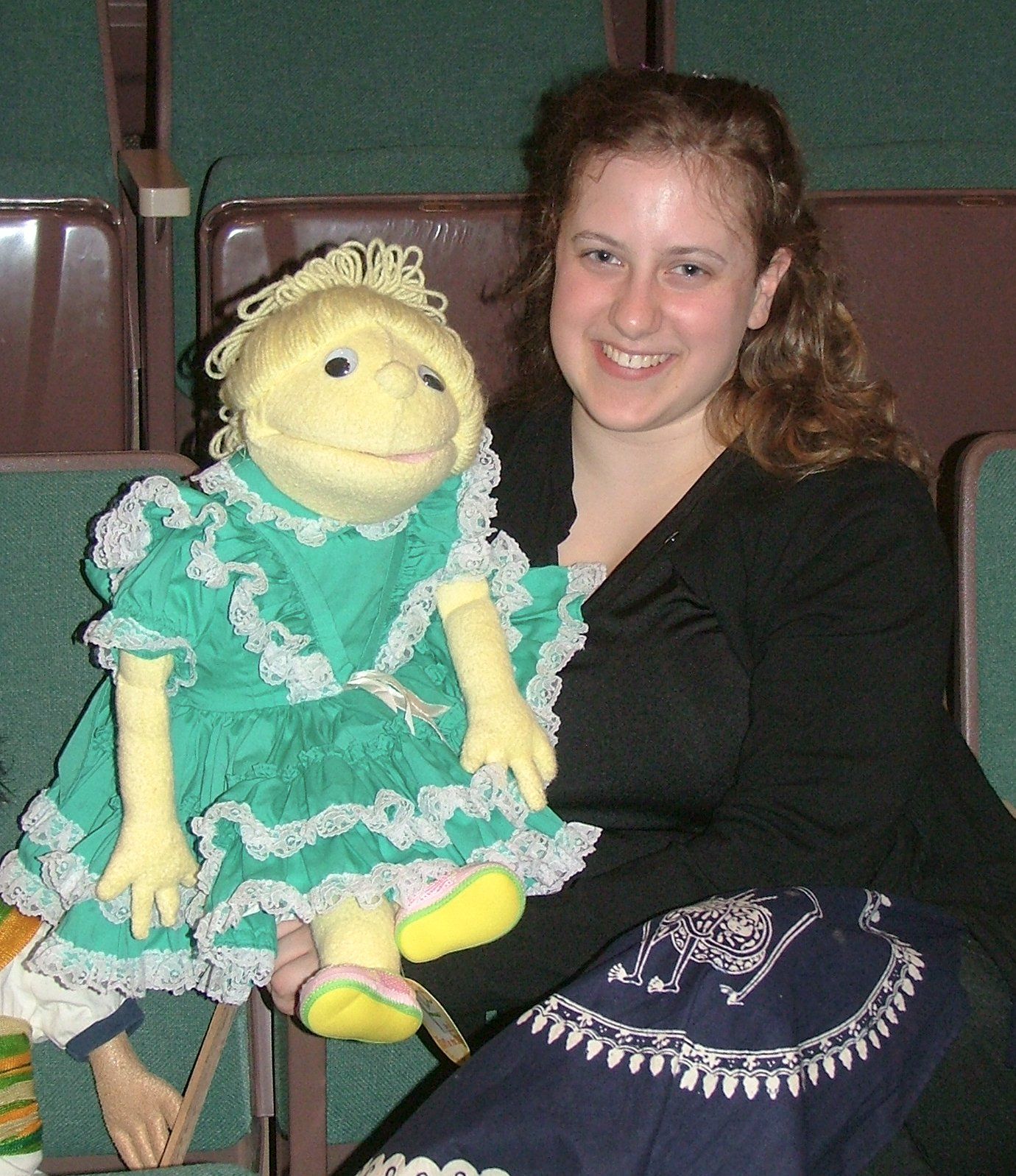Puppet Types
A puppet can be any inanimate object manipulated in a way that brings the object to life.
The art of puppetry as a way of communicating a message is an ancient art form that has been practiced in many forms worldwide. Puppetry is practiced by performers, teachers, therapists, or others to tell stories, teach, or entertain. Puppets often have the uncanny ability to say things that would be uncomfortable for the presenter to share directly.
SIMPLE
Human Hand
Your hand can easily become a puppet by simply opening and closing your thumb to create a mouth. It is pretty simple, but performer Wenceslao Moreno, known as Señor Wences, used this for his ventriloquism act and was so successful he performed on television shows!
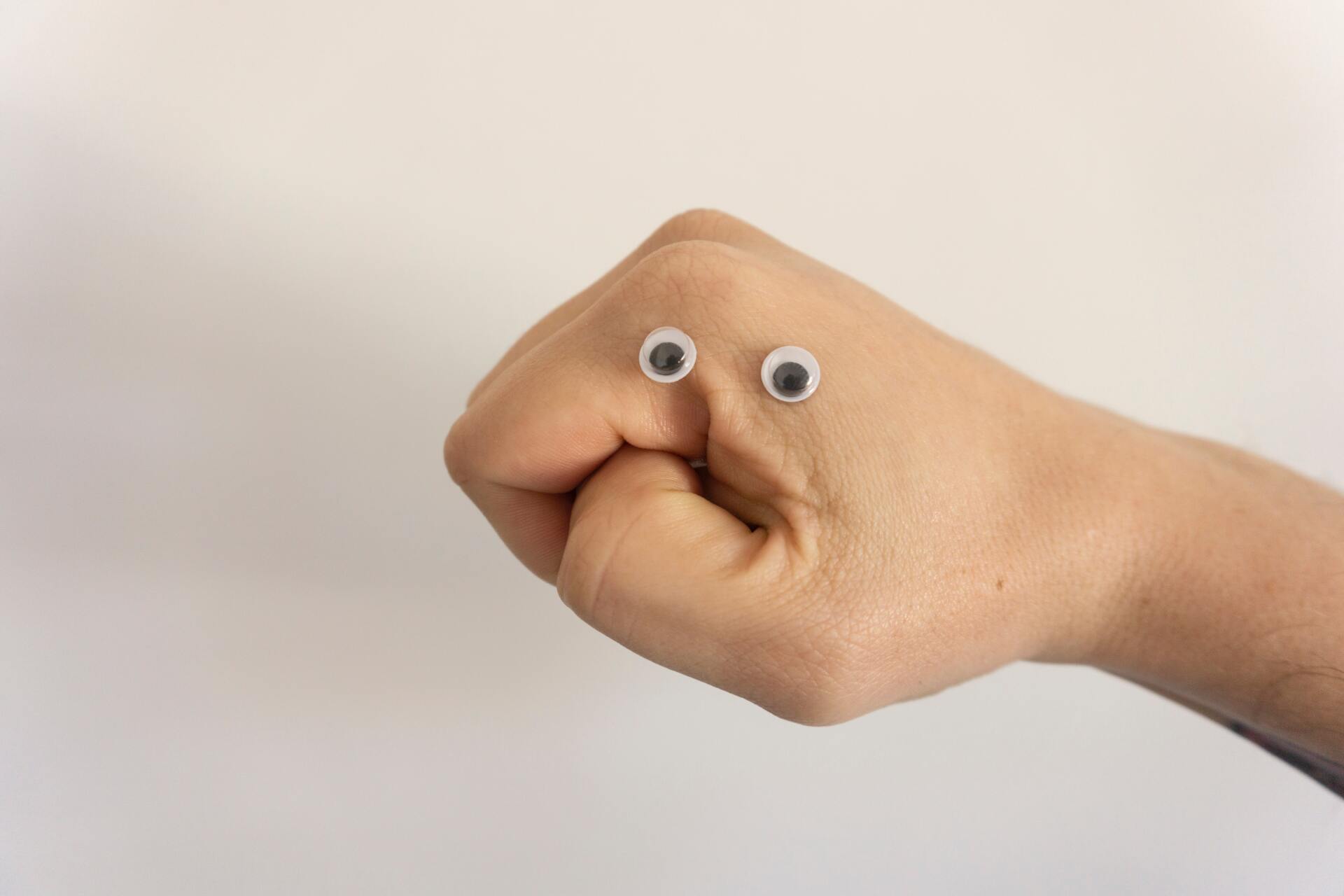
SIMPLE
Finger Puppets
These simple puppets slip onto your fingers to perform stories or songs. They can be easily "crafted" -- see Pintarest for lots of free patterns or purchase them from toy stores or catalogs. How many characters can you animate at one time?
FINGER PUPPET PHOTO 1 - Cute duckling finger puppet constructed at a workshop.
FINGER PUPPET PHOTO 2 - Simple finger puppets purchased from a toy store.

Finger Puppet Photo 1
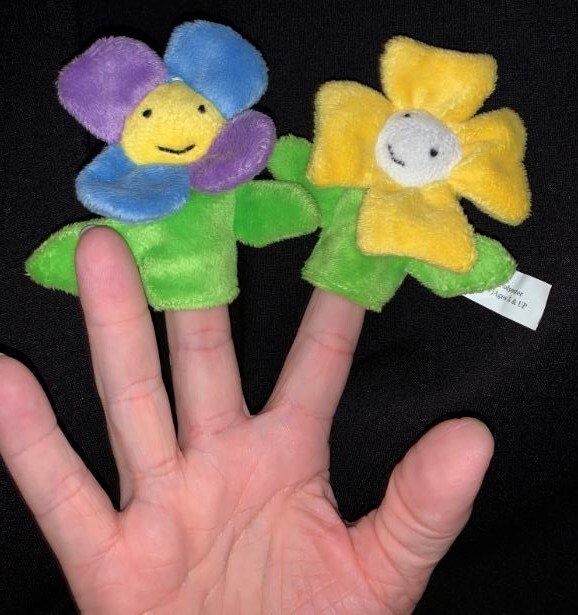
Finger Puppet Photo 2
SIMPLE
Glove Puppets . . .
are similar to finger puppets as they count on the performer's fingers to animate the puppet. Most often the fingers control both the legs and the head of the character. Performers can build their own rather easily. They can also be purchased inexpensively from toy stores.
GLOVE PUPPET PHOTO 1 - These puppets were created by Miss Cassie after a trip to Dollar Tree. By adding eyes and other features, these low cost, simple puppets were ready for shows in just minutes.
GLOVE PUPPET PHOTO 2 - These fun puppets were all created by elementary students at one of our summer workshops.
GLOVE PUPPET PHOTO 3 - This commercially-made glove puppets is designed so that the puppeteer's fingers are the legs of the bumblebee.
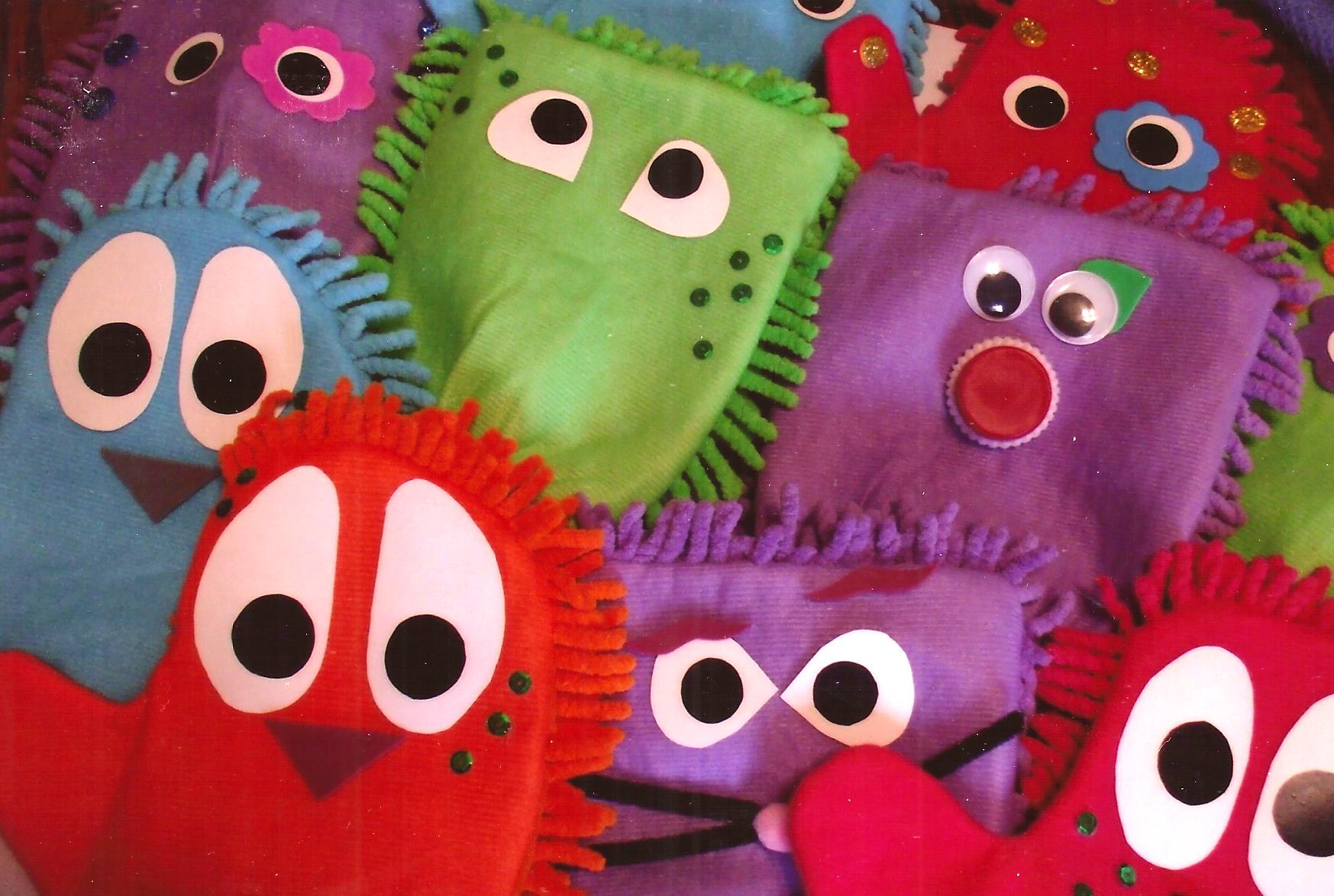
Glove Puppet Photo 1
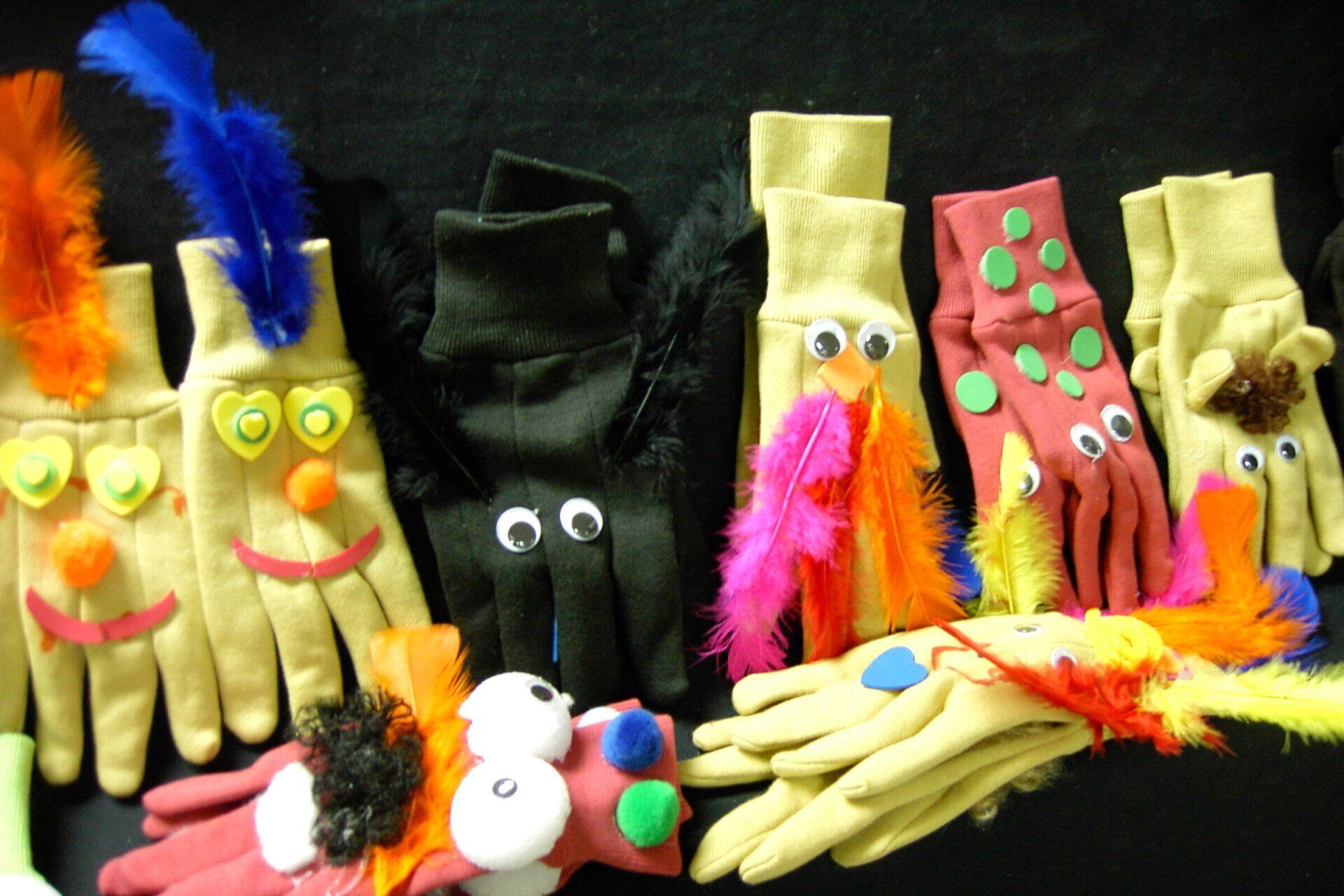
Glove Puppet Photo 2
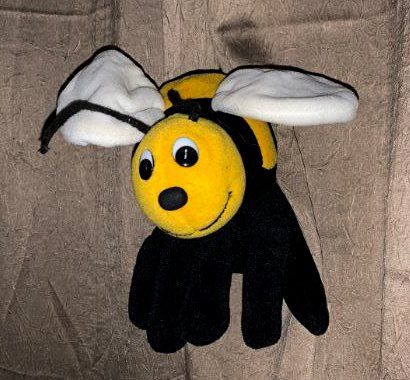
Glove Puppet Photo 3
SIMPLE
Stick Puppets . . .
are as simple and flexible as a puppeteer's imagination. Using popsicles, paint sticks, chopsticks, or bamboo skewers, these basic puppets are excellent for audience participation at storytime or sing-alongs. Essentially, these are pictures glued or taped to a stick. find "characters" online, in magazines, catalogs, or in coloring books. Children can easily make and operate these puppets.
STICK PUPPET PHOTO 1 - Birds are great choices for stick puppets.
STICK PUPPET PHOTO 2 - These stick puppets were created by taking stuffed animals and mounting them on wooden rods. We call these "fish sticks"!
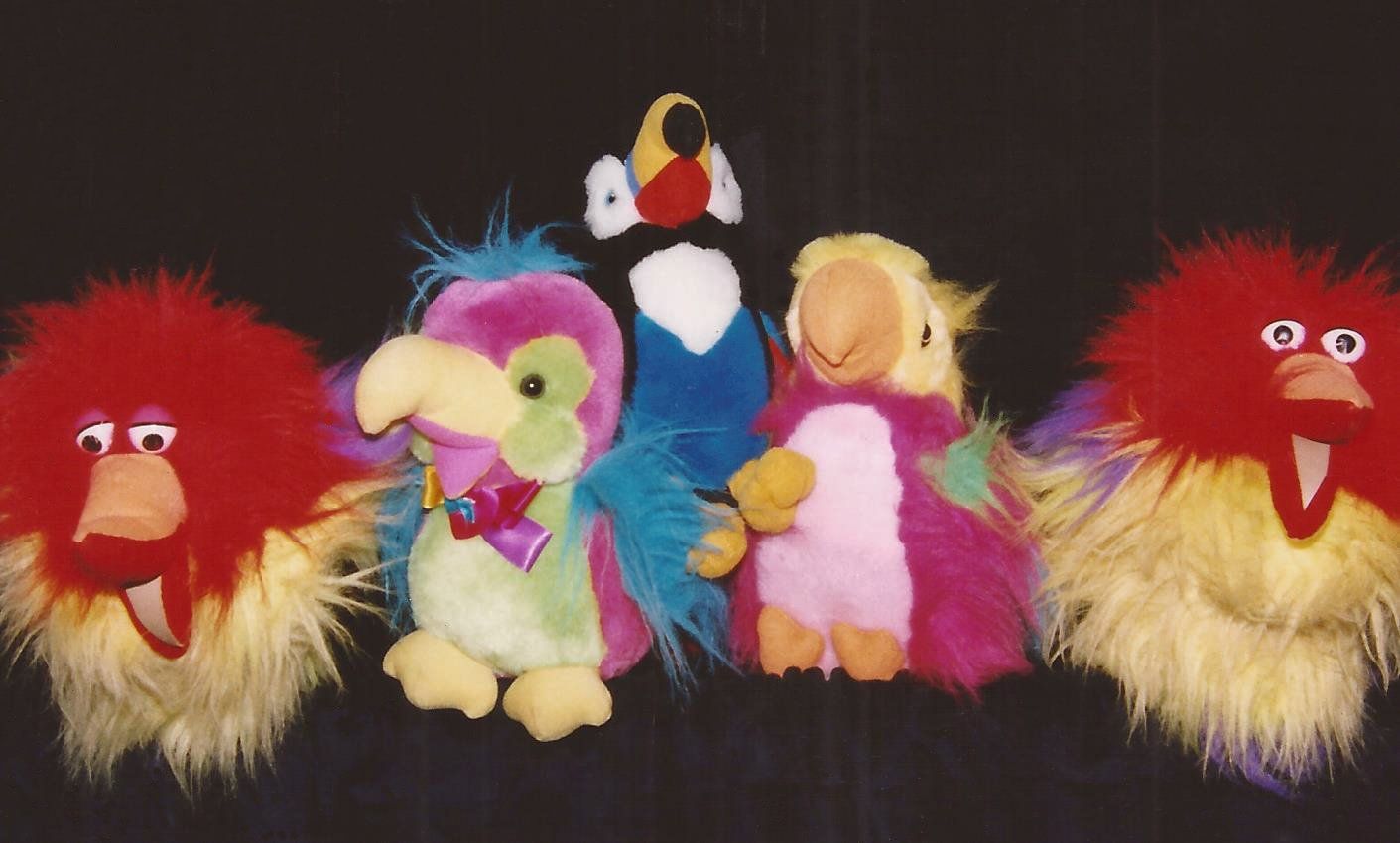
Stick Puppet Photo 1
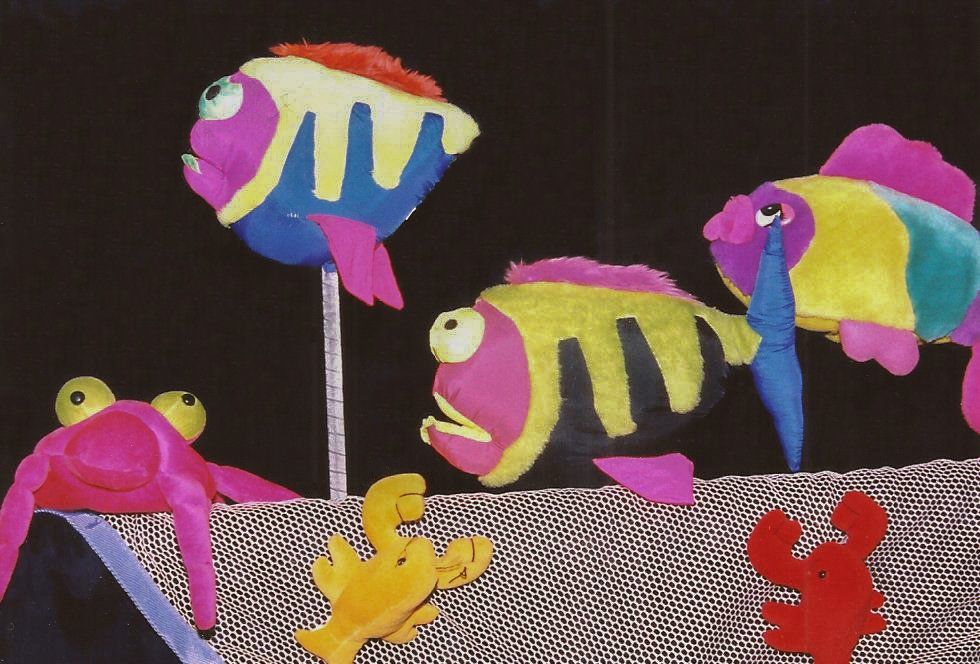
Stick Puppet Photo 2
SIMPLE
Spoon Puppets . . .
are the same as stick puppets in many ways. Cooking utensils have a natural "head" shape and can easily b transformed into fun and amazing characters. FFM&F have used these to create a fun Angel Chorus for our Christmas stories. Again, these basic puppets are excellent for audience participation at storytime or sing-alongs. Plus, children can easily make and operate these puppets.
SPOON PUPPET PHOTO - Spoon puppets are great for stimulating student creativity in workshops. They are fast to create and almost immediately ready to use. Here is Noah's family for a skit about the Ark.
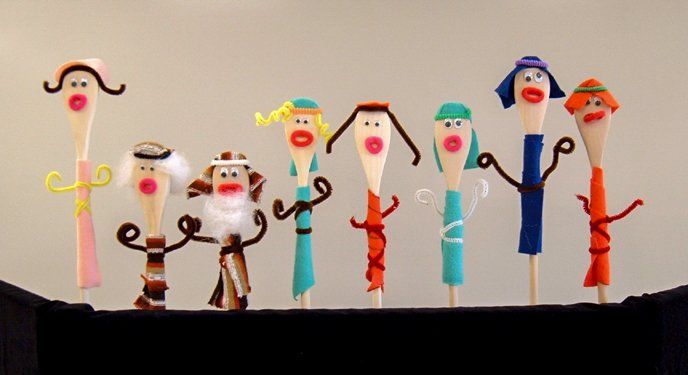
Spoon Puppet Family
SIMPLE
Hand Puppets . . .
are similar to glove puppets and probably the most common type of puppet. Normally, hand puppet are performed from below with one hand. Hand positions may vary, but most often the thumb and little finger is used to manipulate the puppet's arms, while the head is moved by the index or middle finger. With some practice, the puppeteer can perform with two characters at the same time. A simple stage will be needed; puppet characters are usually viewed by the audience from the character's waist up.
HAND PUPPET PHOTO 1 - Miss Cassie demonstrates the most common hand position for using simple hand puppets like the mouse she is holding.
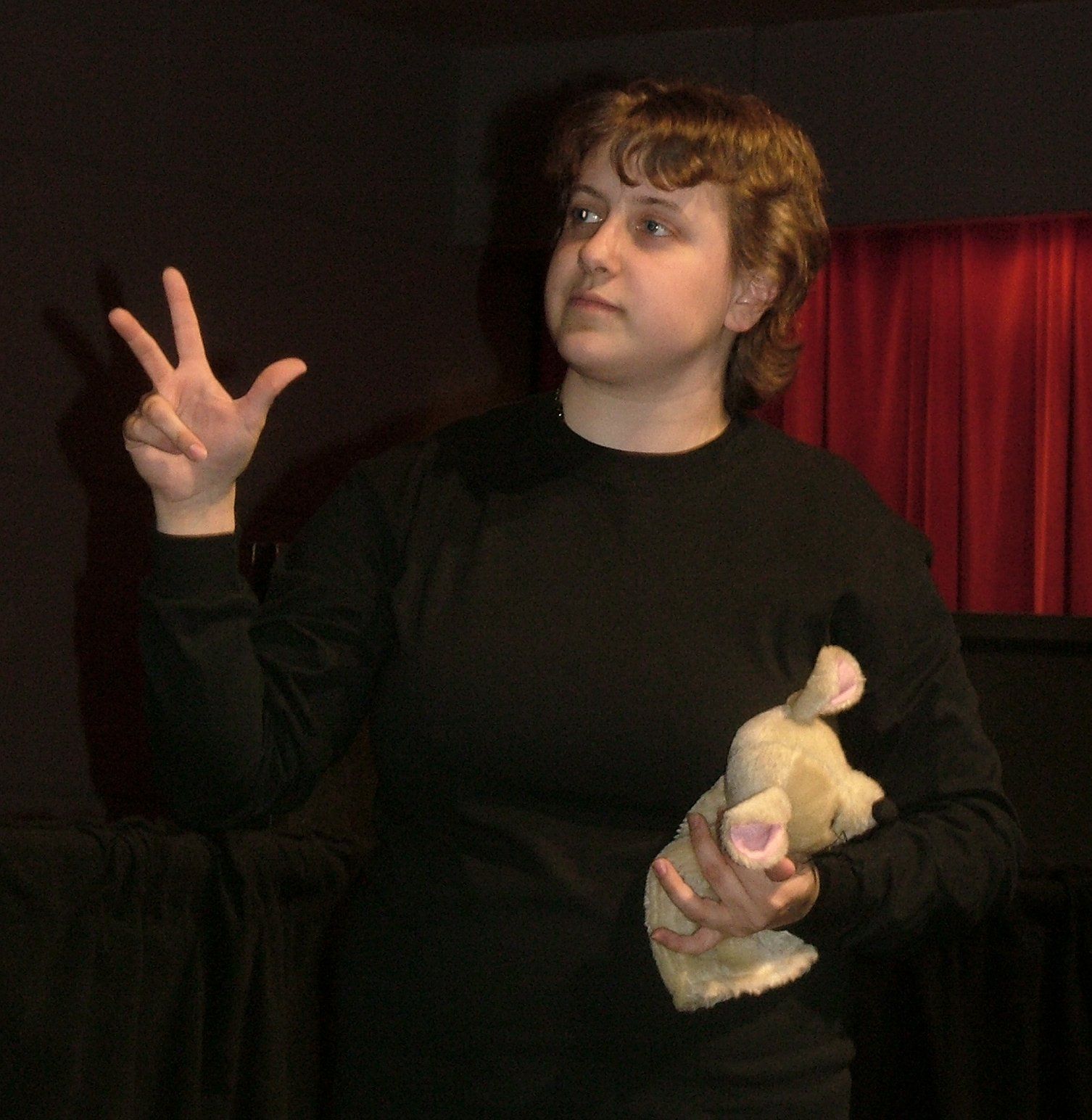
Hand Puppet Photo 1
SIMPLE
Sock Puppets . . .
are a type of hand puppet. Sock puppets--crafted to look like people, animals, or monsters--are fun to make and easy to use. Simple versions use only the sock; however, more advanced styles insert a mouth plate to give the mouth action. Again, these basic puppets are excellent for audience participation at storytime or sing-alongs. Plus, children can easily make and operate these puppets.
SOCK PUPPET PHOTO 1 - While sock puppets normally are manipulated with a puppeteer's hand inside the sock, these cute sock puppets elephants have been used in many shows for a fun effect.
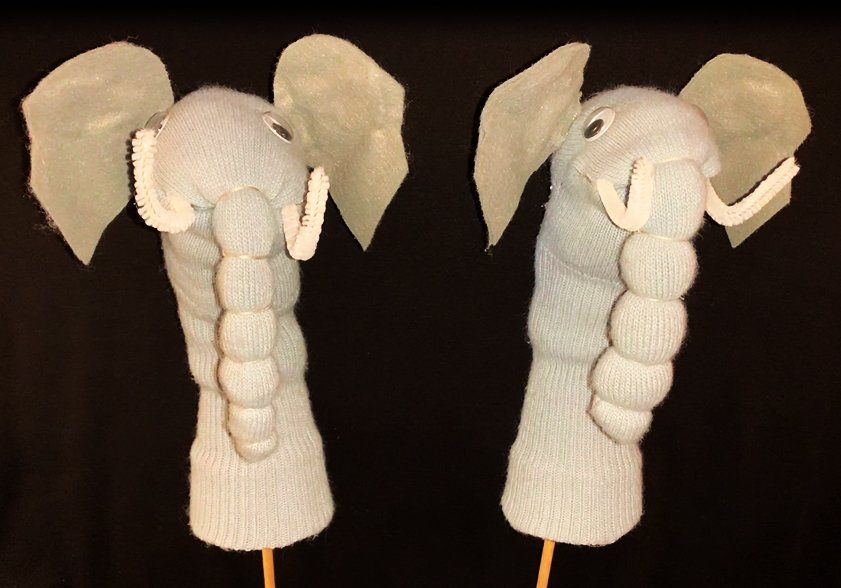
Sock Puppet Photo 1
COMPLEX
Marionettes . . .
are full body puppets that are animated from above with controls that move strings attached to the body parts. Controls can be complex. Skill and practice are required to bring the marionette characters to life. These puppets can be delicate and complicated in stringing. Strings typically are attached to head, shoulders, back, knees, and feet to achieve life-like movement. Marionettes should be as light as possible to operate. However, it is often necessary to weight the feet to make walking movements realistic and avoid "floating." Marionettes are often sculpted from wood and paper mache.
COMPLEX
Rod Arm Puppets . . .
are an advanced form of hand puppetry in which the mouth is controlled by the puppeteer’s hand while a rods control the arms. Normally these puppets are manipulated above the performer's head. This type of puppetry was popularized by the Muppets and adds another dimension of reality to performances. Some rod arm puppets are so complex that it takes more than one puppeteer to perform.
ROD ARM PUPPET PHOTO - Rod arm puppets in use by students at one of our Ohio workshops. Notice the stiff wire rods attached to the wrists of the puppets that allow the puppeteer to manipulate the hands with life-like gestures.
COMPLEX
Ventriloquist Figures . . .
traditionally have heads carved of wood with a movable mouth, eyes, and facial features. The control mechanism is housed in the puppet's head. In the past decade, soft puppets have begun to replace the traditional ventriloquist "dummies." The performer places his hand through a hole in the back of the figure to bring the character to life. Timing and the ability of the performers not to move their lips is needed for successful performance.
VENTRILOQUIST FIGURES PHOTO - Traditional ventriloquist puppets are hand crafted of wood. Many younger performers are now using "soft" puppets like Miss Cassie's puppet friend "Violet" for their performing partners.
OTHER
Shadow puppets . . .
use some aspects of stick puppets. Figures, characters, and even scenery are projected on a screen for the audience to view. Special staging and lighting is needed for shadow puppet shows. Normally the screen--a sheet of translucent cloth or paper--is backlit. The puppets are manipulated from behind the screen with rods as they are silhouetted. Color can be added by incorporating thin colored fabric, tissue paper, or cellophane in the design of the puppets. Some puppeteers create shadow puppet scrolls called "crankies" to have the puppets tell their stories.
SHADOW PUPPET 1 - Mr. Dave and Miss Cassie use an Indonesian shadow puppet to demonstrate puppetry from around the world.
SHADOW PUPPET 2 - The light source (red flashlight) is placed behind the shadow puppet to create an outline on a translucent screen. Here an oval frame is used to illustrate the concept.

Shadow Puppet Photo 1
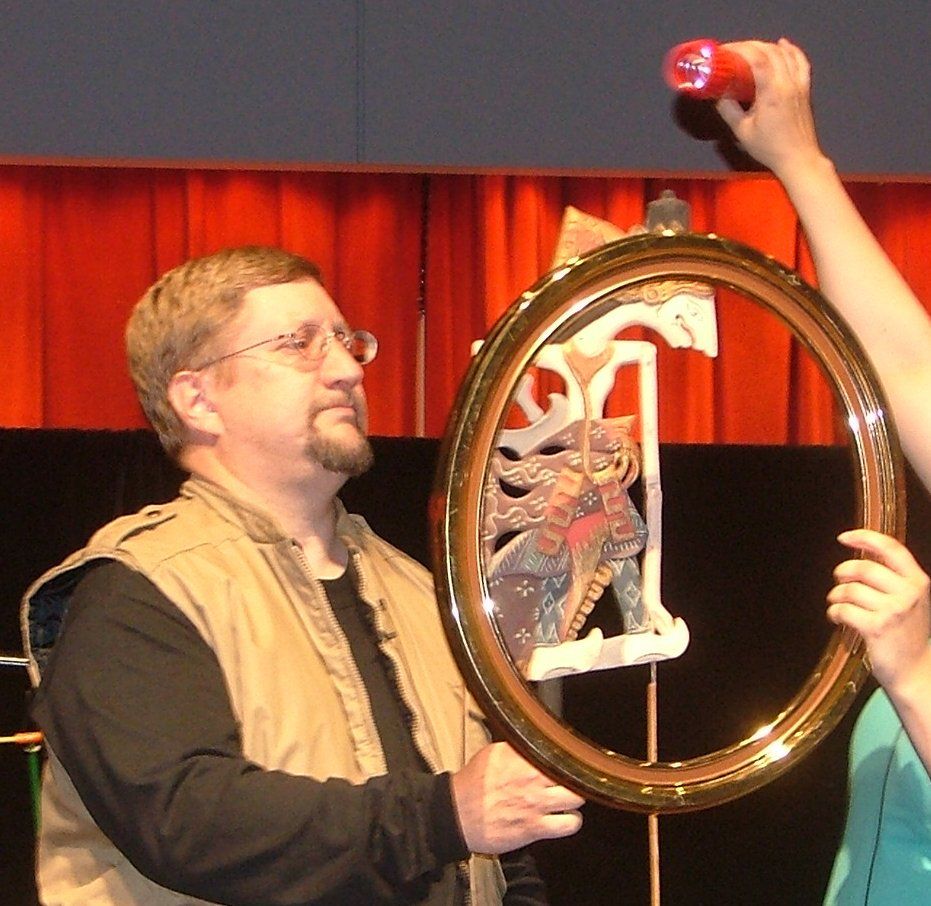
Shadow Puppet Photo 2
OTHER
Mask Puppets . . .
Masks are a familiar element in many pageants, ceremonies, rituals, and festivals across the world. In the western world, the image of Greek Comedy and Tragedy masks represent the performing arts and drama. Masks are used to create a sense of mystery both for their wearers and the audience. Masks often are parts of a costume. Mask traditions are found across the world and especially in native cultures.
MASK PUPPET PHOTO 1 - Mr. Dave wears and authentic hand-carved mask to demonstrate one of the many types of mask puppetry used across the world..
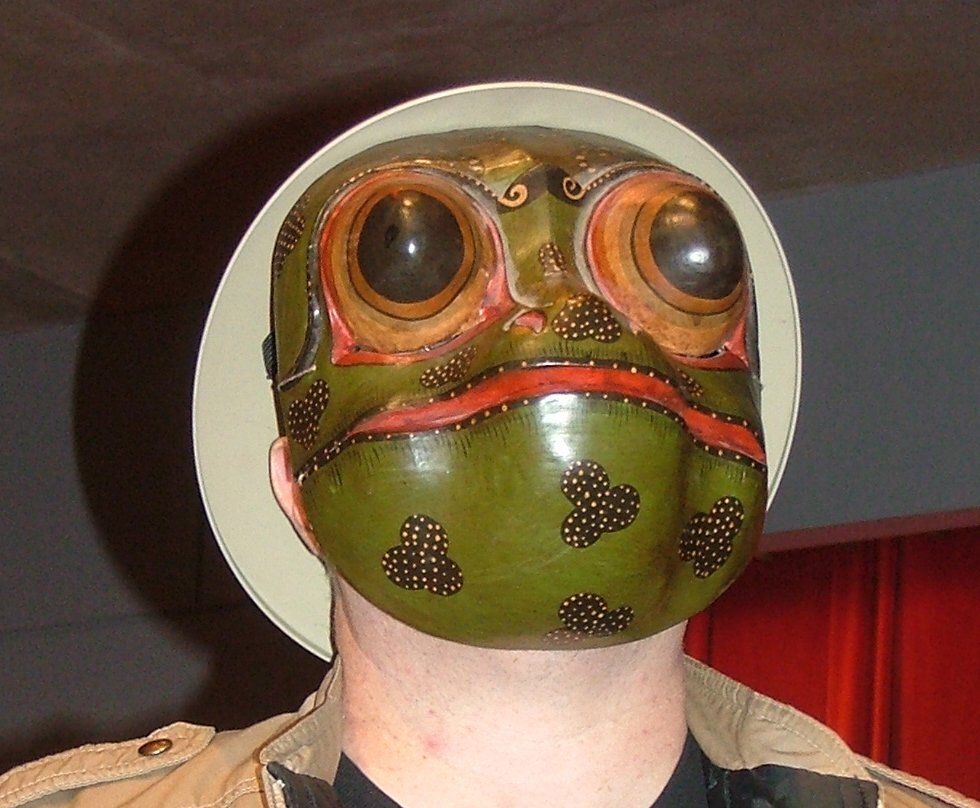
Mask Puppet Photo 1
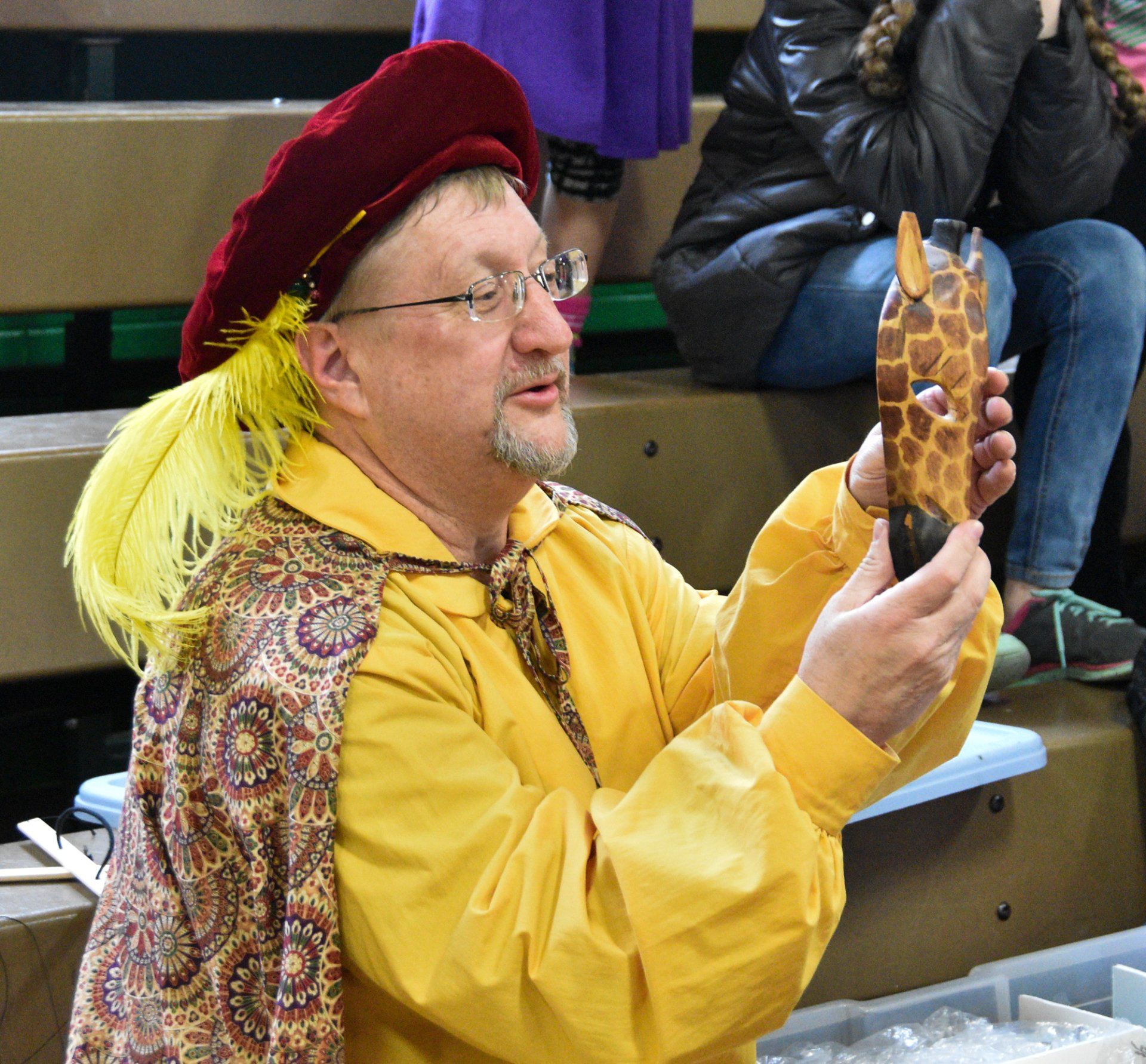
OTHER
Blacklight Puppetry . . .
One of the newest forms of puppetry is performed through the use of blacklights. In a totally dark venue, the amazing fluorescent colors pop and come alive in blackness. While the puppet types may be similar to the other forms listed above, puppeteers are typically dressed all in black from head to toe. All curtains and backdrops are black. With normal stage lighting off, the performers are virtually invisible during the program.
BLACKLIGHT PUPPETRY PHOTO 1 - Moving mouth hand puppets created with fluorescent fabrics look amazing in a dark auditorium lit with blacklights.
BLACKLIGHT PUPPETRY PHOTO 2 - This blacklight sun puppet was built with foam. It was then sprayed with fluorescent paint and trimmed with fluorescent fabric.
BLACKLIGHT PUPPETRY PHOTO 3 - Other blacklight puppets the we have built include hearts, stars, moons. comets. flowers, and animals.

Blacklight Puppetry Photo 1
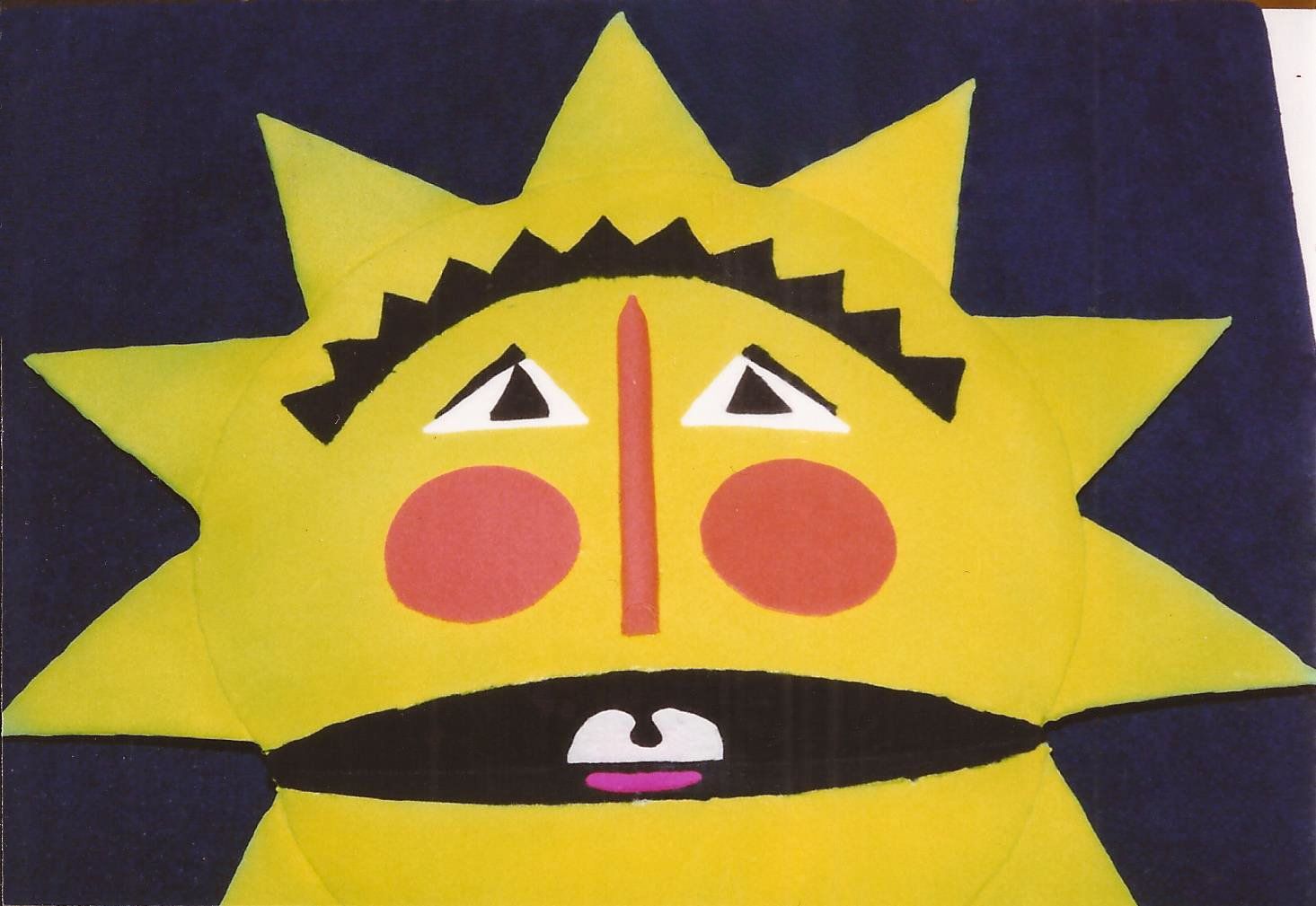
Blacklight Puppetry Photo 2
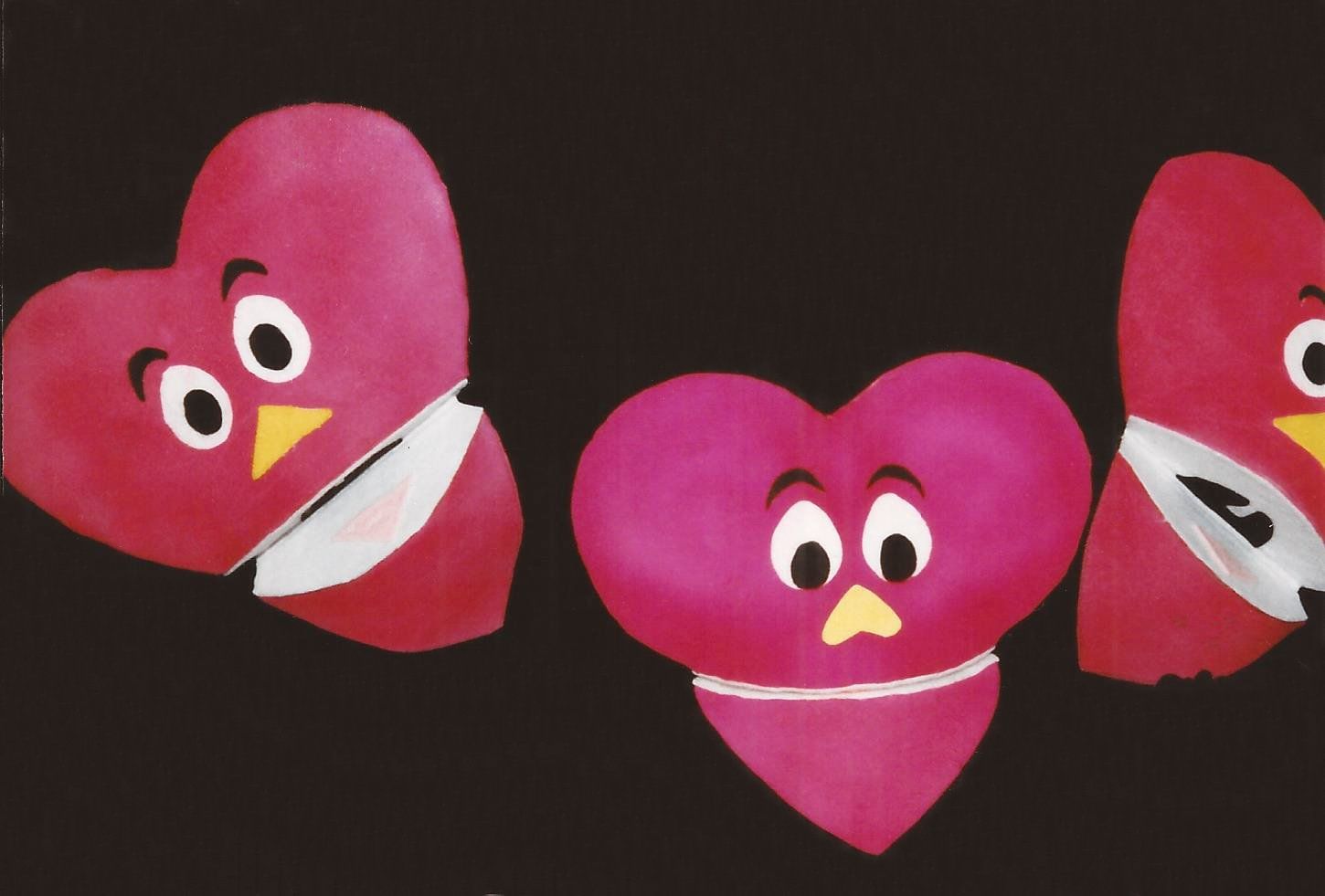
Blacklight Puppetry Photo 3

